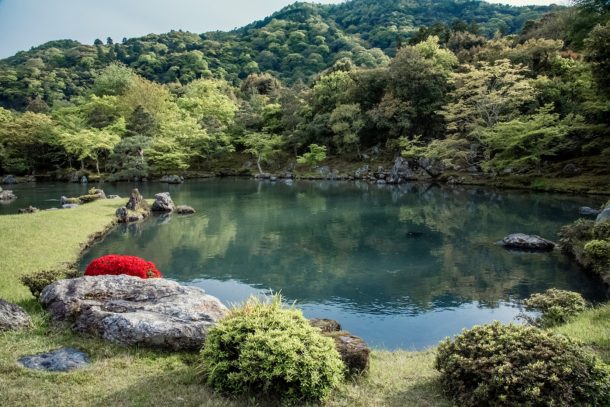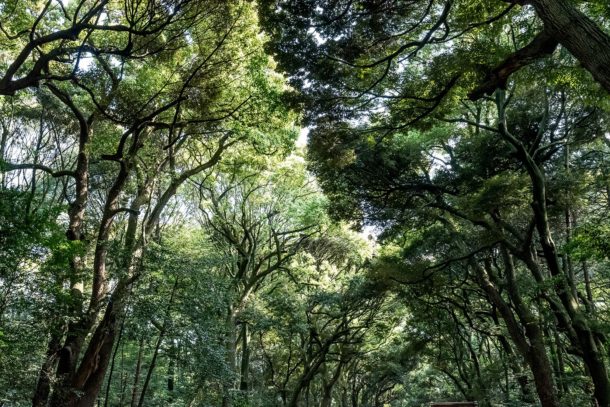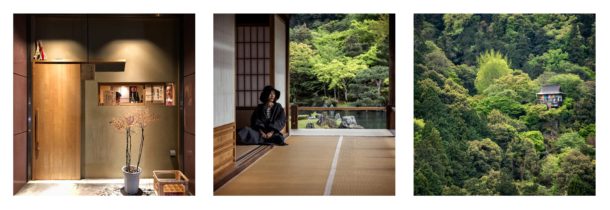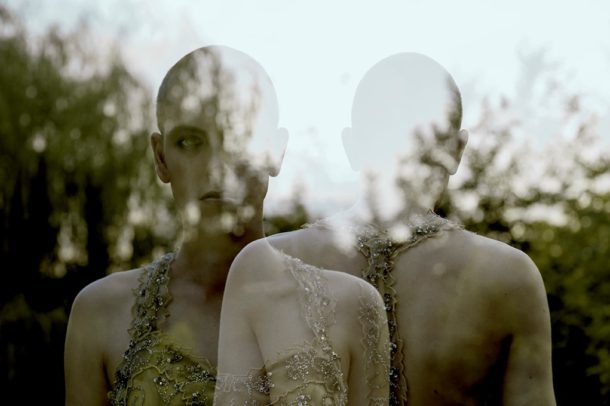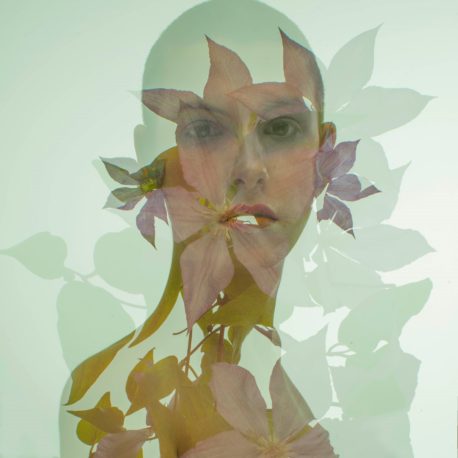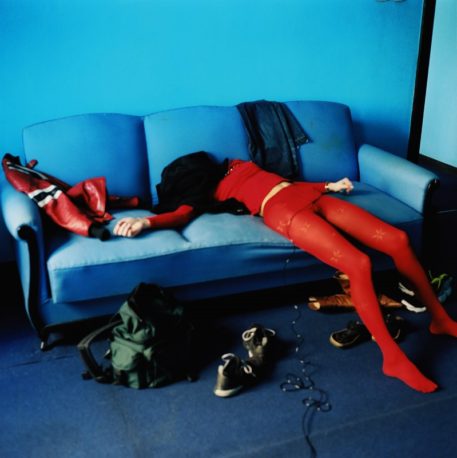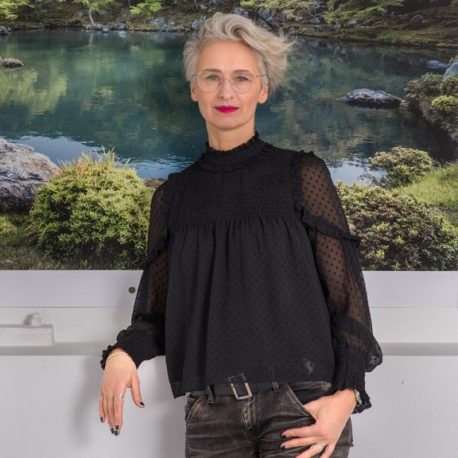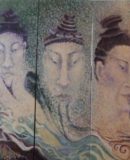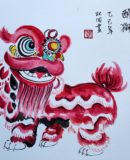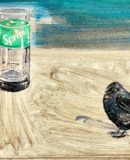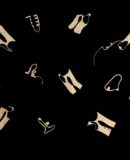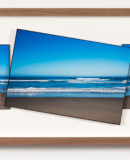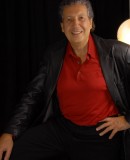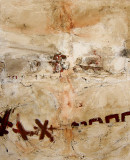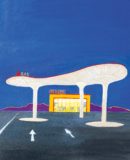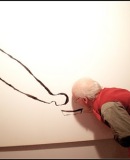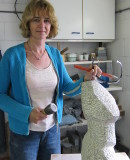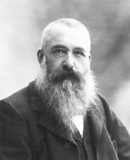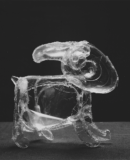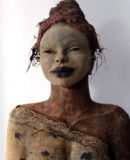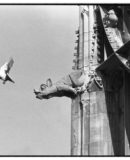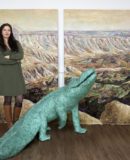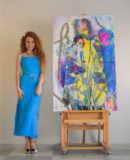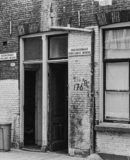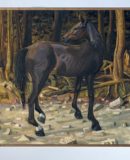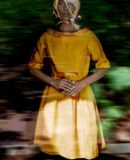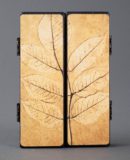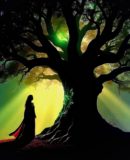World Fine Art Professionals and their Key-Pieces, 142 - Kasia Fortuna
World Fine Art Professionals and their Key-Pieces, 142 – Kasia Fortuna
Half October I was at the opening of a duo-exhibition at the Amsterdam WM Gallery: ‘Wabi Sabi – The Love of Imperfection’ by Kasia Fortuna and ‘Room with a View’ by Wanda Michalak.
On a trip to Japan Kasia Fortuna, from Lipków, Poland, discovered a whole new way to look at beauty. It was called ‘Wabi Sabi’. Wabi Sabi is the Japanese art of finding beauty in imperfection and profundity in nature, of accepting the natural cycle of growth, decay, and death. It’s simple, slow, and uncluttered – and it reveres authenticity above all.
Imperfection
In Japan uneven teeth might be considered sexy, shoes that are too big are ‘sweet’, and a bent and disfigured tree is something to cherish. Kasia: “My trip to Japan opened my mind to a new definition of beauty. Unlike in Europe where we are used to a hellenistic model of beauty strictly connected with perfection, grandeuse and symmetry, in Japan the idea of beauty is based upon buddhism and zen philosophy, which praise imperfection, modesty and lack of symmetry.”
She now appreciates and loves things that are impermanent, faded and unpolished. “I also found a new passion, the old and traditional Japanese arrangement of flowers, ikebana. I hope to study ikebana in Japan and introduce the art to Poland.”
Passion for photography
Kasia’s art education started in childhood. “My father was often playing the piano, it was either Chopin or jazz, he used to have his own jazz band in the ’60’s. He also had nice vinyl collection that I listened to after school. My mother collected art books that I looked at, I then tried to copy the drawings. My favourite was Albrecht Dürer’s self-portrait and the portrait of his mother.”
Both her parents had a passion for photography and practised together. Kasia: “My father was the technical eye and mum was kind of the art director. They received a few awards for their photos. My father encouraged me to take photos and gave me a little Russian camera called a Zorka 4. I was about eight years old and wasn’t interested at the time, I preferred drawing and painting.”
After ten years of drawing, painting and piano lessons at school she discovered she could express herself through photography. “I passed exams to the Academy of Film in Łódź in 1998 and studied photography for five years. My graduation work ‘Gender, the contemporary androgyne’, with which I got my diploma, was a series of portraits of people whose sex identity was not easy to recognise. It was a tendency I had observed over the previous few years.”
Design
The following 15 years she worked as a freelance photographer, mainly she did advertisements and portraits for women’s magazines as well as organising art exhibitions. Six years ago she felt the need to broaden her horizon. “So I started studying industrial design. I studied shoe design at Central Saint Martins in London.” Last year she received her diploma for the project ‘Invisible barriers’. “It is about how to stop animals straying onto roads.”
Studying design has given her a new perspective towards her photography. “I’m now trying to connect photography with design.” This fits in her need to have new challenges. “I’m fascinated by subjects and explore them until I think I have a proper understanding, I then transform my knowledge to some form of presentation. After I present, exhibit or write about the subject I’m fulfilled and then start looking for a new passion. I’ve done this since my early childhood. I started drawing passionately, then switched to playing the piano then to sport and so on. Every few years I need to have a new challenge.”
The change gives her new energy. “A fresh start really excites me. In general there are people in my work. All the subjects I get involved with are connected to people, their emotions and alienation. I also love nature. I use plants and their form, colour and state of vegetation as a symbol like in ‘The Strength of Beauty’.
Key work
Does she have a key work? She has. Kasia: “I think my key work is the series of pictures titled ‘I am’. They’re selfportraits during one of the most difficult times of my life. After a bone marrow transplant and chemotherapy I was cured from cancer but the long therapy destroyed my relationship. I couldn’t accept this and started documenting my state of emotions. It turned out to be the best cure, I could look at myself out of the box and appreciate what I have. I think this is my strongest work so far.”
Images: 1) Ikebana, 8) I am, 2002, 9) gender, 10) Kasia Fortuna
www.instagram.com/kasiafortuna/
http://gallerywm.com/WP/wabi-sabi-room-with-a-view-by-kasia-fortuna-wanda-michalak/
https://ifthenisnow.eu/nl/verhalen/world-fine-art-professionals-and-their-key-pieces-142-kasia-fortuna
Disclaimer: The views, opinions and positions expressed within this guest article are those of the author Walter van Teeffelen alone and do not represent those of the Marbella Marbella website. The accuracy, completeness and validity of any statements made within this article are not guaranteed. We accept no liability for any errors, omissions or representations. The copyright of this content belongs to Walter van Teeffelen and any liability with regards to infringement of intellectual property rights remains with the author.


